
Mid and high-rise buildings are typically made of concrete reinforced with steel. But, is it possible that skyscrapers could be made mainly out of wood in the future? With the popularity of high-density structural (mass) timber/engineered wood ever increasing, some say yes. This is especially likely because reforms to US code will permit all-wooden high rises up to 18 stories tall in 2021. Unfortunately, no US company has what Binderholz (a European timber company) does: a mature engineered-wood supply chain that stretches down rail lines and truck routes directly into spruce forests. Hence, despite the hype around mass timber, only a handful of U.S. firms make it.
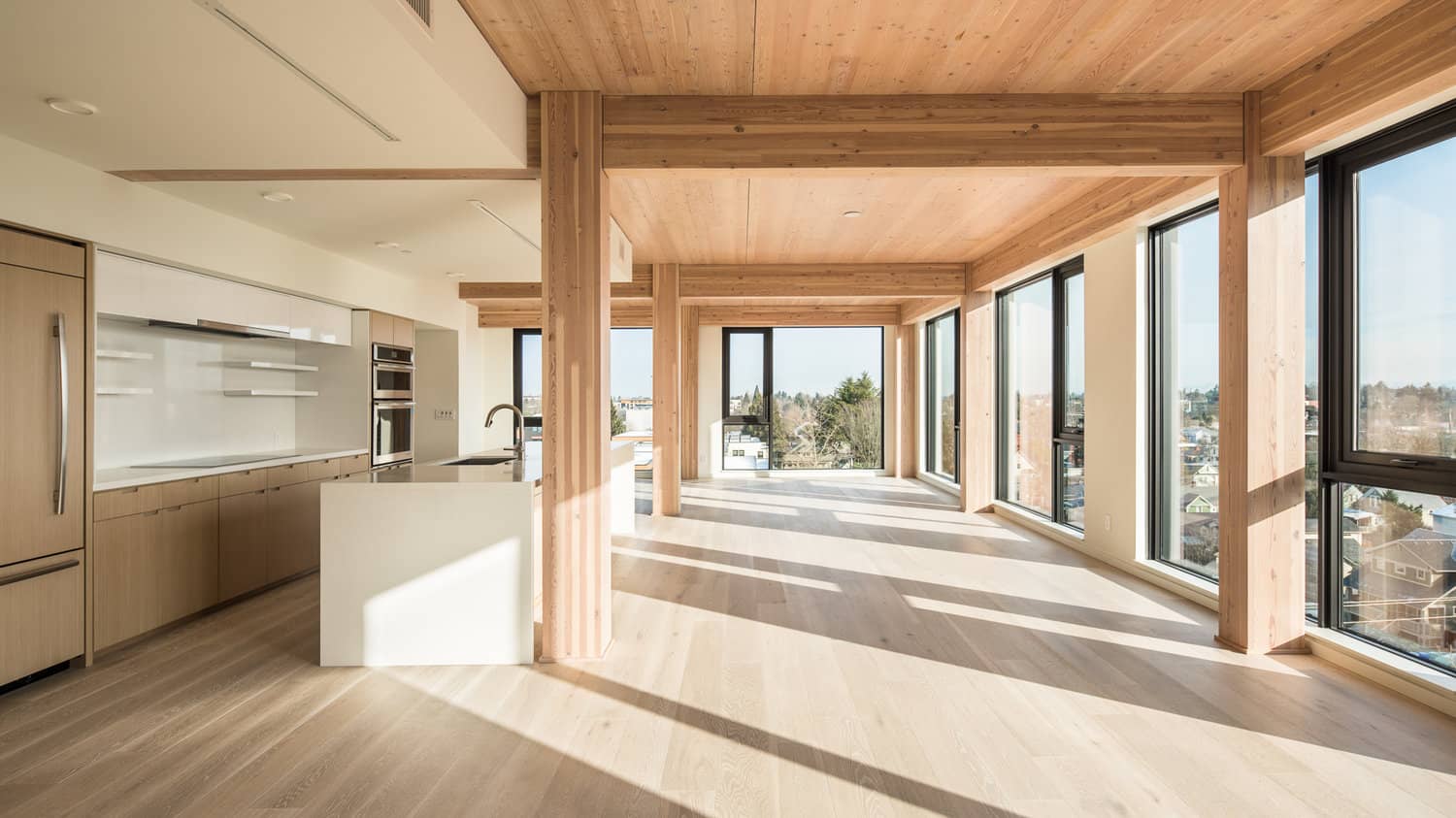

Types of Engineered Wood
CLT is made up of at least 3 layers (sometimes 7 or more) of kiln-dried lumber that are stacked crosswise and glued together (though sometimes attached with nails or dowels). Cross-lamination provides a reinforcement effect similar to that seen in reinforced concrete slab, and it results in high splitting resistance, stability, and stiffness.
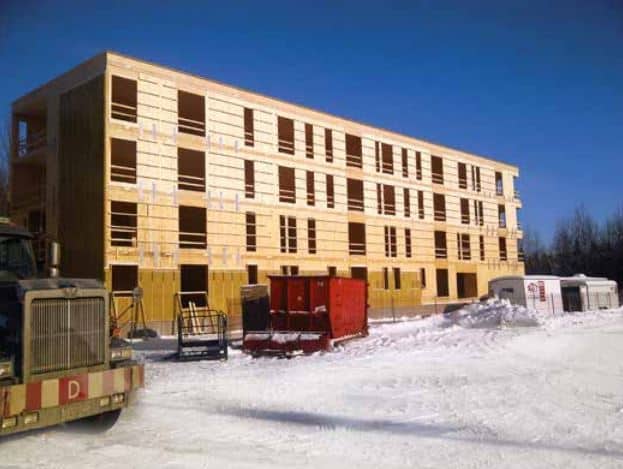
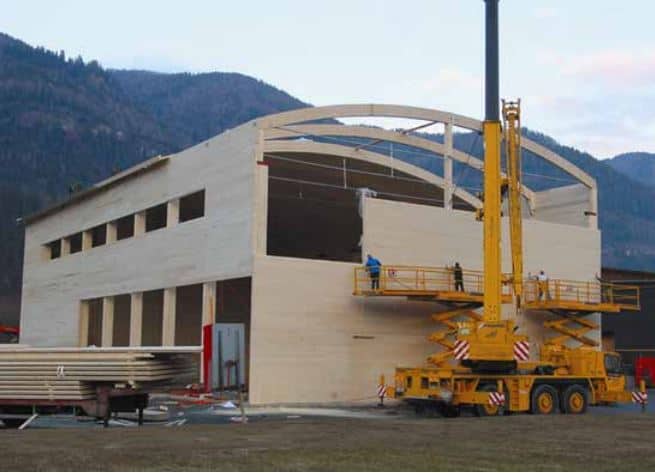
Glulam is made of parallel, bonded layers of kiln-dried timber. Custom glulam can be made in almost any size and shape, including curved. Due to its architectural beauty, it is common to leave glulam exposed. Glulam is preferred over SCL for exterior applications.
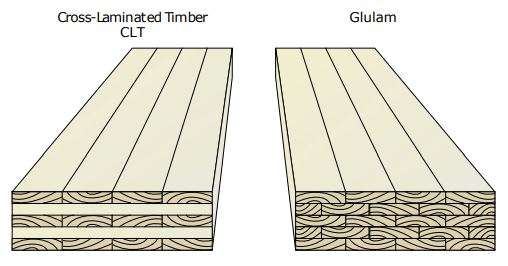
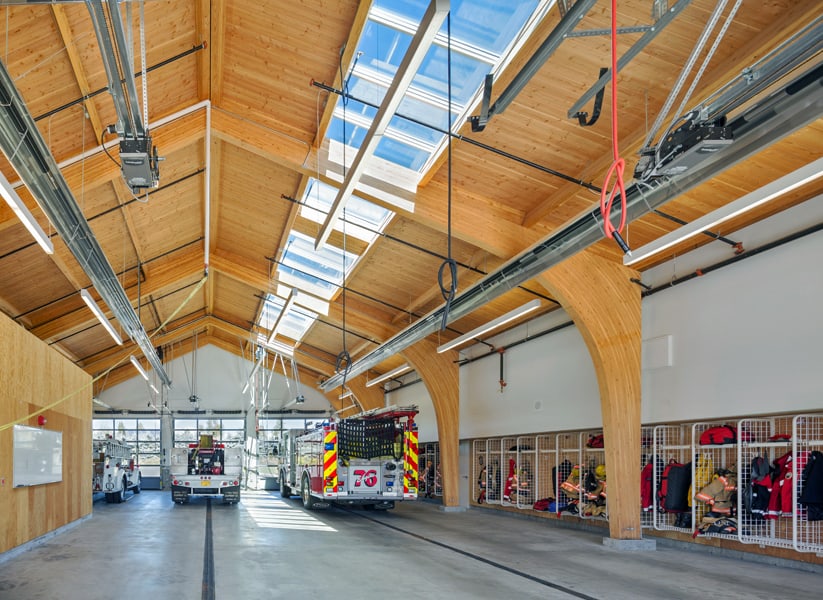
SCL is a family of engineered wood products that are made of layered wood veneers or strands bonded together with moisture- resistant adhesives. SCL framing components, such as beams, studs, and columns, have several advantages over conventional sawn lumber. They are stronger, more stable, less prone to warping/splitting/shrinking, and more resistant to moisture than sawn timber.
SCL products:
- Laminated Strand Lumber (LSL): Typically the least expensive engineered wood, but not as strong as LVL. Flaked wood strands are arranged parallel to the length of the framing component. Looks similar to OSB.
- Parallel Strand Lumber (PSL): Often expensive, this type of engineered wood is made of veneers that are bonded together in a parallel orientation (similar to plywood manufacturing). It is frequently left exposed for aesthetic appeal.
- Laminated Veneer Lumber (LVL): Manufactured similarly to PSL, but usually cheaper. Its benefit is that it can be made into narrow beams that can be combined into a larger beam.
- Oriented Strand Lumber (OSL): Similar to LSL, but it uses shorter strands. Its production is similar to OSB and it is generally not as strong as LVL or PSL.



Conclusion
Ultimately, engineered wood offers low cost, versatility, and resilience for floors, walls, and roofs. It is also ideal when it comes to wind and fire resistance, noise control, energy efficiency, concrete forming, and more. Additionally, wood has low thermal conductivity: it is 6 times more efficient than an equivalent thickness of brick, 105 times more efficient than concrete & 400 times more efficient than steel.
Even though mass timber isn’t as strong as steel, it also doesn’t collapse under direct heat as quickly. Plus, mass timber is much easier to customize and prefabricate than concrete or steel. Not only that, but mass timber allows designers to send plans directly to the factory to be built to specifications, which translates to faster construction, lower costs for labor, and less disruptions at the construction site. Think about this possibility: a line of standardized, customizable, buildings, largely made of modular mass timber, that developers could order to spec like IKEA sofas.
But, are engineered wood products truly sustainable and environmentally friendly?
The Consortium for Research on Renewable Industrial Materials found that wood had a more positive impact on the environment than steel or concrete in terms of embodied energy, global warming potential, air emissions, water emissions, and solid waste production. Very little of the energy used to manufacture engineered wood comes from fossil fuels, over 50% comes from bioenergy such as tree bark, sawdust, & other harvesting byproducts. Approximately 8% of the world’s total carbon emissions come from cement and concrete production, which releases about half a ton of the dangerous greenhouse gas carbon dioxide (CO2) for every ton produced. The manufacture of steel, which accounts for around 5 percent of all emissions, releases nearly twice its weight in CO2.
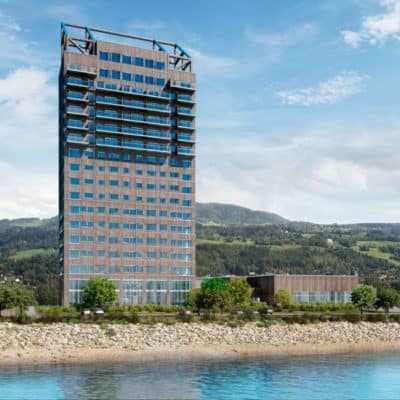

https://structurecraft.com/materials/engineered-wood/parallel-strand-lumber
https://structurecraft.com/materials/engineered-wood/laminated-strand-lumber
https://materialdistrict.com/article/worlds-tallest-wooden-tower/
https://www.norbord.com/na/wpcontent/uploads/2017/07/E30.pdf
https://www.nishkian.com/understanding-engineered-wood-beam-options/
https://www.seattle.gov/dpd/cms/groups/pan/@pan/documents/web_informational/dpds021903.pdf
https://www.woodsolutions.com.au/wood-product-categories/structural-composite-lumber-scl
http://www.structuraltimber.co.uk/assets/InformationCentre/timberframeeb2.pdf
